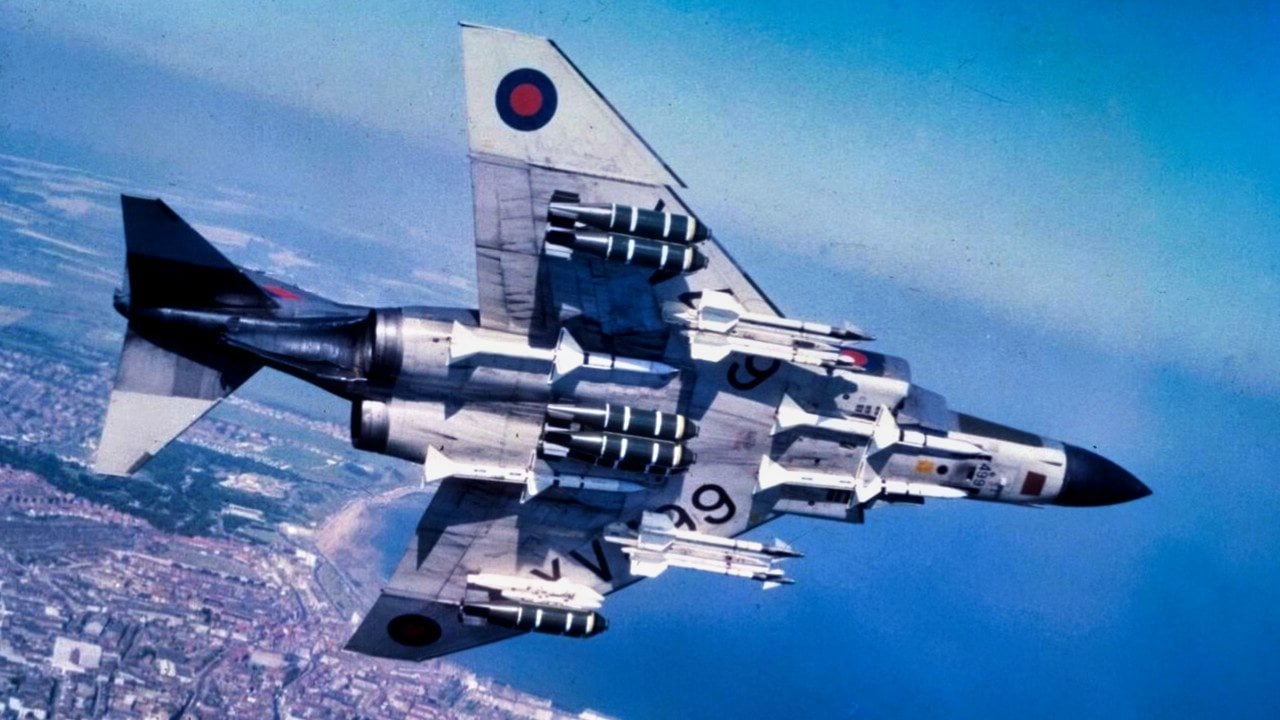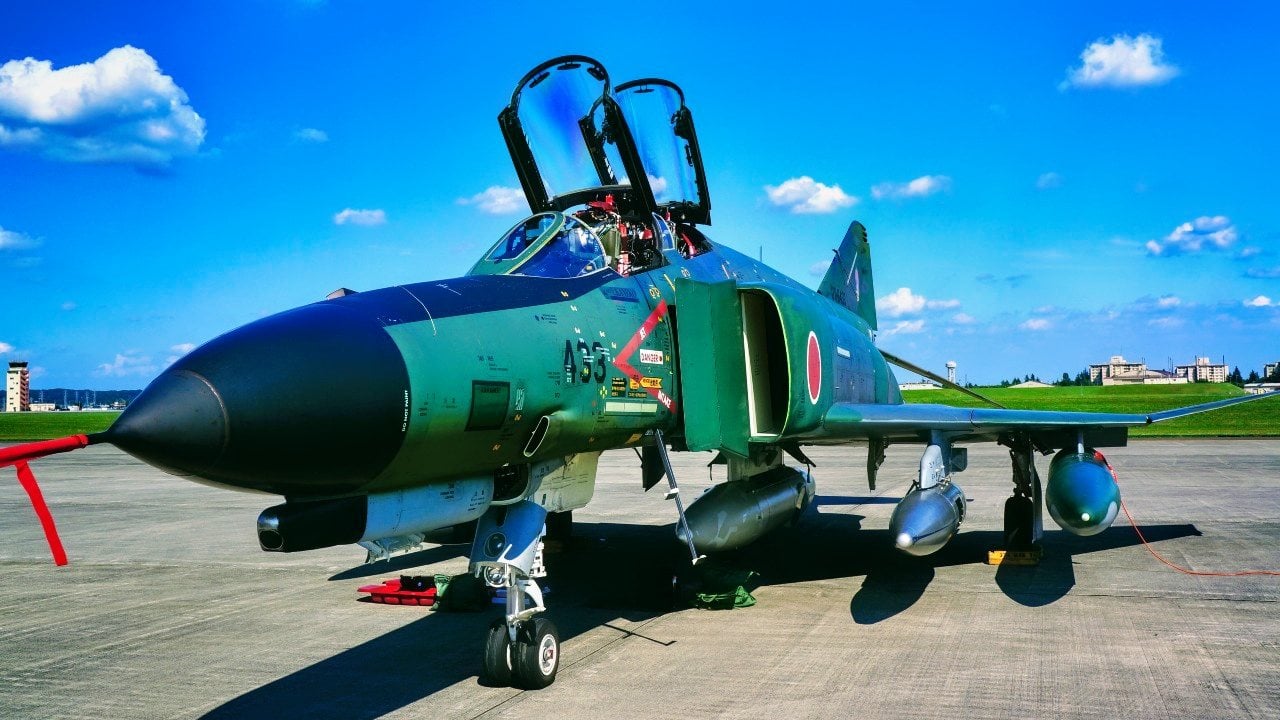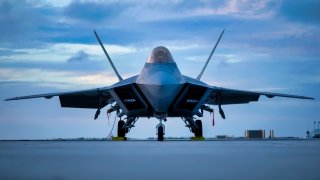'Go Home': F-22 Raptor Fighter Flew Under Iran's F-4 Phantom Undetected
The event has been widely discussed online, but it’s important to remember the significant technological gap between the aging F-4s and the advanced fifth-generation F-22 Raptor fighter.
What You Need to Know: In 2013, two Iranian F-4 Phantom II fighters, deployed to intercept a U.S. MQ-1 Predator drone, were taken by surprise when a U.S. Air Force F-22 Raptor approached undetected, flying under one of the Phantoms before warning them to retreat.
-While the incident highlighted the stealth of the F-22, experts have noted that the Iranian pilots, flying Vietnam War-era jets, were outclassed from the start.
-The event has been widely discussed online, but it’s important to remember the significant technological gap between the aging F-4s and the advanced fifth-generation F-22.
F-22 Raptor vs. Iran's F-4 Phantom: The Real Story Behind the 2013 Incident
A widely repeated story that continues to make the rounds online tells how a decade ago, a pair of Iranian Air Force F-4 Phantom IIs – fighters that had been in service since the 1960s – were deployed to intercept a U.S. Air Force MQ-1 Predator drone and then taken by surprise by an F-22 Raptor.
The much-regaled tale is much ado about nothing, to be blunt.
The incident came after a pair of Iranian Sukhoi Su-25s had attempted to shoot down another Predator a few months earlier. The Islamic Republic's Soviet-designed fighters, which were developed for close air support and not air superiority, failed in their mission. More embarrassing for Tehran was the fact that the drone recorded the whole incident with its cameras.
Those Iranians in the F-4 Phantom IIs probably thought they'd have much better luck.
What they didn't know was that the Predator was being escorted by two F-22s.
To say the F-4s were outclassed is an understatement – but by most accounts of this incident, the Iranians were utterly oblivious to the presence of the fifth-generation fighters. One of the Raptors even flew under the Iranian aircraft, confirmed the armament of the F-4, and then pulled up on its left wing and made its presence known, radioing to the Iranians, "you really ought to go home."
F-22 Raptor and F-4: The Internet Loves the Story
This is hardly a "secret" incident – as it has been written about dozens (perhaps hundreds) of times.
It has been compared to the opening sequence of the original Top Gun film from 1986, where Tom Cruise's "Maverick" flies above a hostile MiG-28 (a fictional aircraft), surprising the adversary.
The F-4 incident has even been described as "Maverick-ed" like it was some kind of magical move. That is even a point that has been suggested repeatedly.
Start the ticker tape parade, toast those pilots as the greatest American heroes, and send a big middle finger aimed at Tehran while chanting, "U-S-A, U-S-A, U-S-A."
As previously reported by The National Interest's Eli Fuhrman, "The incident demonstrates the impressive stealth characteristics of the Raptor, which was able to approach the two Iranian fighters undetected and scout out their arsenals, before scaring them off."
But we should not have expected anything less.
Goliath vs. David
Did this sortie really demonstrate the "impressive stealth characteristics" of the F-22 - especially as those Iran's pilots were flying an aircraft likely as old as their parents? Aircraft that Tehran has even struggled to keep in the air.
As Harrison Kass, explained, "The Iranians flying in Vietnam War-era F-4 Phantoms were ill-equipped to match an F-22. Granted, the F-4 was a capable airframe – the most produced American supersonic military aircraft ever – but it first flew in 1958. The F-22, on the other hand, was an up-to-date, 21st century marvel."
And though Iran may have some good pilots, the United States Air Force has arguably the best in the world. To borrow a term from President Barack Obama, it seems like the U.S. pilots in the most advanced aircraft simply went up against the "JV team," operating antiquated equipment.

Putting It In Perspective
The cockpits of most jet fighters can be described as cramped at the best of times, and during the development of the F-4, there were reports of complaints that some found its cockpit almost claustrophobic. Moreover, no twin-seat aircraft can't be described as offering the best view from the cockpit, while most fighter pilots are reported to employ clearing turns while descending to ensure there isn't any traffic below them.
In other words, from the cockpit of an F-4, it would be impossible to see any aircraft approaching from underneath, and the Iranian aviators were likely focused on the MQ-1 Predator drone when the F-22s snuck in.
Consider the blind spots in modern automobiles, and aircraft have it far worse.
David Axe, writing for Wired in 2013, explained that even the Lockheed Martin F-35 Lightning II has a serious blind spot directly behind the aircraft – one he warned could get them shot down. The F-4, being a much older technology, has much the same and arguably even worse blind spot.
Then, there is the fact that the F-4 wasn't designed for a dogfight. If an adversary can get that close, it would be a problem.
As Kass also noted, "The Phantom was not particularly maneuverable. Enemy MiGs could typically outturn the F-4, which wasn't designed for dogfighting and suffered from adverse yaw in tight turns. Instead, the F-4 was intended to fire radar-guided missiles from beyond visual range, not engage in air combat maneuvering."
Conclusions
The F-22s likely gave the Iranian pilot quite the scare all those years ago. And though the story has been told and retold, we also only know the official U.S. Air Force's version. Tehran has been silent, and based on published reports, never even acknowledged that it occurred.

This doesn't underscore the fact that the F-22 Raptor could sneak up on an F-4 undetected, but a more significant story would be if an aging F-4 flown by Ukraine did the same thing to a Russian Su-57 (possibly even shooting it down).
In other words, there seems to be a lot of bragging that the U.S. aircraft that has been described as the absolute best air superiority fighter in service was able to successfully approach another aircraft from the 1960s without being seen.
We shouldn't be surprised or elated; we should have expected this outcome. As the F-22 is also the most expensive fighter ever built, we should be disappointed if it couldn't have conducted such an operation.

Author Experience and Expertise:
Peter Suciu is a Michigan-based writer. He has contributed to more than four dozen magazines, newspapers, and websites with over 3,200 published pieces over a twenty-year career in journalism. He regularly writes about military hardware, firearms history, cybersecurity, politics, and international affairs. Peter is also a Contributing Writer for Forbes and Clearance Jobs. You can follow him on Twitter: @PeterSuciu.
All Images are Creative Commons.


